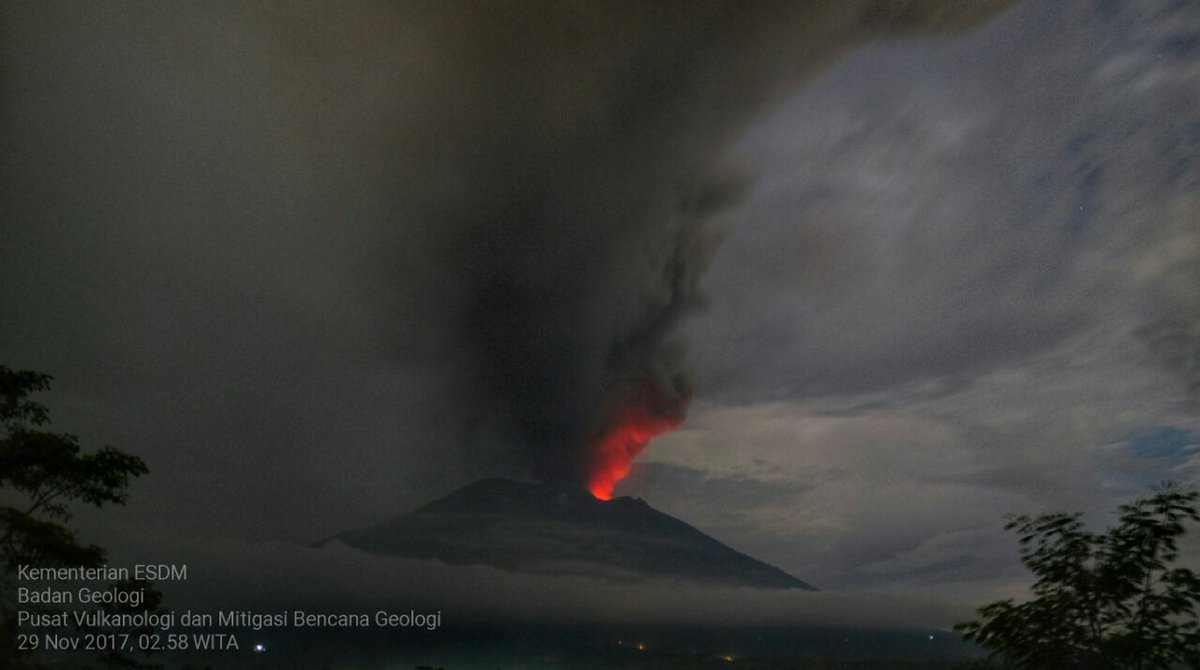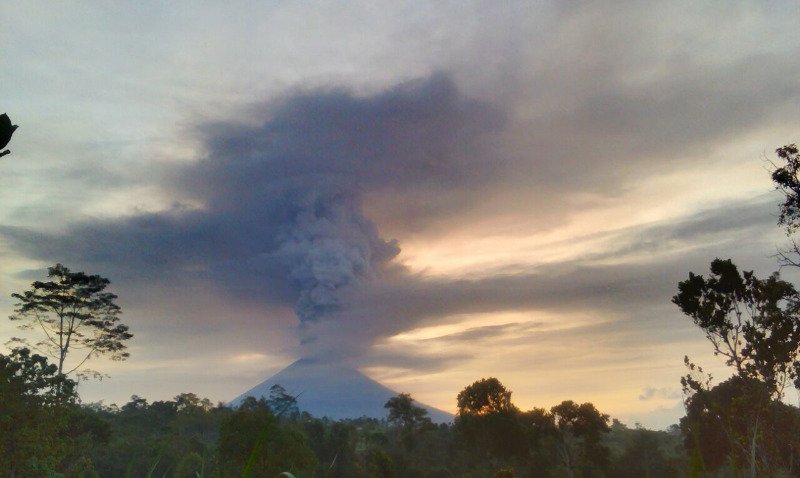Official report - Recent Developments with #Agung Activities (1 December 2017 21:00 WITA) via @id_magma
(Translated using Google, clarified/edited by me): magma.vsi.esdm.go.id/press/view.php…

-Visual-
After undergoing a volcanic earthquake swarm over the period Sept-Oct 2017, finally on 21 November 2017 at 17:05 WITA the phase of eruption of Mount Agung evolved to produce volcanic ash as high as 700 m above the peak.
- Seismicity -
Earthquakes are still dominated by the occurrence of deep and shallow volcanic earthquakes. This indicates that there is still magma movement at depth. Currently the number of volcanic earthquakes is no longer as much as the period September-October 2017.
GPS measurement results do not record a clear pattern of inflation ahead of the eruption. This is different from the pattern shown by GPS prior to the occurrence of swarms (sequence of volcanic earthquakes) in the period September-October 2017...
... whereas that GPS showed inflation of the body of Mount Agung [slight outward moving of the volcanic flanks] since August 2017 until mid-September 2017.
[tiltmeter general info here: earthquake.usgs.gov/monitoring/def…]
Lab test results of the volcanic ash produced by the opening eruption on November 21, 2017 show the existence of juvenile content (new magma material). Within the ash, older material from the 1963 eruption was also identified...
... Based on the results of this laboratory test, it can be concluded that the first eruption of Gunung Agung was phreatomagmatic. This eruption can occur when the new magma interacts with water in the aquifer system under the crater of Mount Agung.
Prior to the Nov 21, 2017 eruption, CO2 gas could be measured at high concentrations by the MultiGAS equipment flown by Drone. However, the SO2 gas concentration was not yet measurable. After the Nov 21, 2017 eruption, to this day...
... the concentration of SO2 gas is still consistently measured. Higher concentrations of SO2 was observed over the period of 26-27 November 2017, after which, the concentration of SO2 relatively decreased.
Satellite data consistently records hotspots [higher heat output] on 27, 28 and 29 November 2017 with temperatures ranging from 286.6-298.8 +/- 6 degrees Celsius, with a maximum power of 97 megawatts.
Satellite data also indicate that the effusive eruption (lava flow to the surface) is still occurring within the crater.
This effusive eruption has implications for the addition of lava volume in the crater with an estimated current lava volume of about 20 million cubic meters, or one third of the total volume of the crater.
Based on multi-parameter data analysis, it can be concluded that until now (December 1, 2017) volcanic activity of Agung is still high and still in the phase of eruption.
Therefore, the status of Agung is still at Level IV (Awas). Communities around Agung and climbers/visitors/travelers are urged to NOT climb Agung and not to engage in any activity within the Danger Zone...
... within the area of the Agung crater and in all areas within a radius of 8 km from the Agung crater, plus the sectoral expansion to the North-Northeast and Southeast-South-Southwest out to 10 km from the Crater of Mount Agung.
It is still safe to travel in Bali as long as you do not enter the above Danger Zone.
Ministry of ESDM
Geological Agency of Volcanology and Geological
Hazard Mitigation
-- END--
magma.vsi.esdm.go.id/press/view.php…













